By Alex Trukan
Combination of playing out from the back through central defenders with quick penetration through the thirds is not only attractive to watch but also effective. The ability to prioritise passing options and play forwards if possible is one of the attributes modern centre backs will definitely need. That requires not only great technical level but also clever movements from players positioned in front of the ball, mainly midfielders as well as strikers. Decision making whether to try to progress forwards or retain possession combined with balance between being patience and positive is crucial to effectively play forwards.
When centre backs are in possession the first priority would be to look for spaces in behind of the opposition defence and try to exploit striker’s forward run. That can be initiated by the centre back who is not pressurised and has spotted a striker starting to twist his body position forwards and starting to make a run. That is the first option and if possible should be used as it opens up direct goal scoring opportunities. At the same time, it can’t be encouraged at all costs as it creates a situation when the ball is kicked forwards rather than passed.
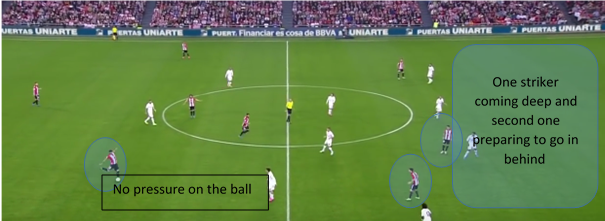
If strikers show no initiative to get on the ball, the second option is a midfield unit. Here, it often helps if one of the midfielders drops back to ‘break’ the straight line and therefore either have space to receive and play forwards (if nobody follows as shown below) or create gaps within the opposition unit (if midfield tracks his run). Other centre back and full backs should make themselves available to pass to by showing good supporting positions.
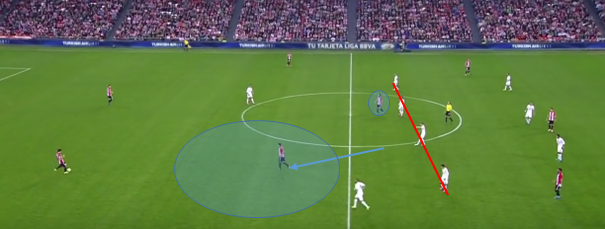
Modern central defender should be also encouraged to drive forwards if the pass is not available and there is an opportunity to do so. That is also a form of playing forwards which can gain territory as well as open up new options to play.
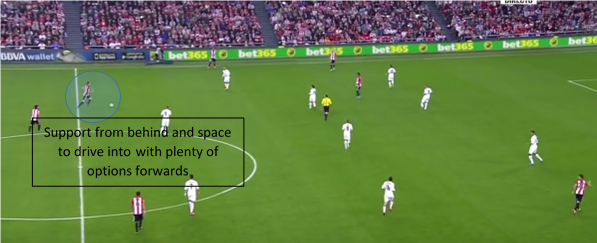
If it’s not possible to progress forwards straight away, controlled possession across the back unit to shift the opposition might be an option. Couple of sideways passes to drag the opposition forwards towards the ball can create spaces to play forwards on the opposite side.
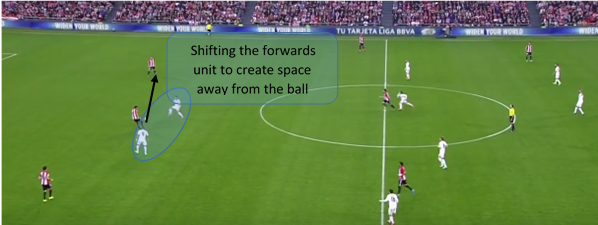
Opening up spaces and CB’s having time on the ball creates an opportunity to play vertical pass through opposition units. Here is the crucial role of midfielders and strikers to look for gaps and try to be always linked to the player on the ball. Midfielders should aim to work diagonally with strikers and operate in a different channels than them. If the opposition plays with holding midfielder, wingers should try to come inside into space around the defensive midfielder.
[wpsharely id="2988"][/wpsharely]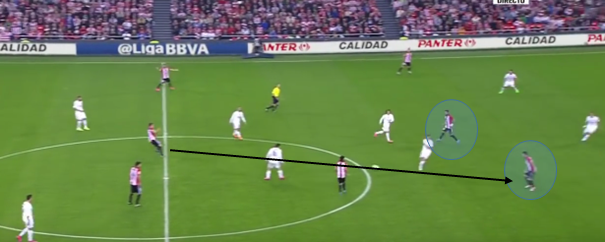
Having players in behind of the ball gives that extra security and balances risks and rewards involved. In case the ball is lost (i.e. through pass is intercepted), the team is still fairly organised and compact.
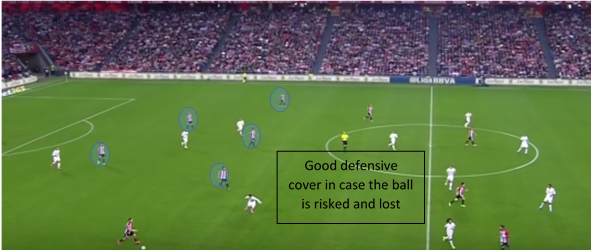
Playing forwards with pace is attractive and effective, however it is important to not fall into trap of trying to go forwards at all costs what often leads to starting to pass with no intention and losing the ball. Centre backs playing forwards are linked to other players and therefore it is crucial to coach the players around and away from the ball as well.
By Alex Trukan, Development Coach, Nottingham Forest
@AlexTrukan


